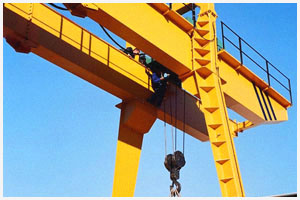
Unfortunately, in our country, studies show that an occupational accident occurs approximately every six to seven minutes. Looking at the sectoral distribution of those who had work accidents, mining and quarrying take the first place. This sector is followed by the electricity, gas and water sector with 7,7 percent. These two sectors are followed by the manufacturing sector with 5,2 percent, the construction sector with 4,6 percent and the transportation, communication and storage sector with 3,7 percent.
According to the Labor View Report presented during the last 5 year; in the world; 1,1 billion workers work for 4 dollars a day, while 50 million women work at home. In addition, the number of child workers in the world is reported as 168 million, while 232 million people work as migrant workers who have left their countries and countries. Every minute, the 4 worker dies from work-related illnesses or accidents.
In order to prevent all these accidents, it is necessary to carry out periodic control and inspection of the workplaces and all kinds of equipment used in the workplaces without making concessions. The Machinery Safety Directive issued by the Ministry of Industry and Trade on the basis of the European Union's new Machinery Safety Directive 2006 / 42 / EC comes. Pursuant to this regulation, machines must not harm human health, safety or property when properly installed, maintained and used as expected. The safety conditions to be observed during the production of the machines designed in this way, the conformity assessment processes to be followed and the working criteria of the notified bodies that will conduct conformity assessment are explained in this regulation.
When it comes to lifting and transmitting equipment, the first ones that come to mind are cranes, lifting platforms, forklifts, hoists, vehicle lifts, pallet trucks and their derivatives. Almost every workplace has one or more of these and similar tools.
The fifth section of the Machinery Safety Regulation and the fifth section of the Occupational Health and Safety Regulation describes the safety precautions to be taken in lifting machines. However, they shall carry out these checks and issue reports based on the authorization they have received from national or international accreditation bodies. It is of no value to have these checks performed by a non-accredited testing and inspection body.
According to the Regulation on Health and Safety Conditions in the Use of Work Equipment, periodic inspections must be carried out every year unless another period is specified in the standards. In addition, the Code has added some additional conditions for lifting and transmission vehicles:
To give an example of some of the desired results in the tests carried out, the lifting and transmitting vehicles must be strong enough to safely lift and suspend at least 1,25 times the declared load, in the static test for cranes, the weight of the load is at least 1,25 of the declared load. In the rigid dynamic test, it must be at least 1,1 times and there must also be load brakes resistant to this load. Stability testing for lifting equipment other than mobile ones is carried out only if deemed necessary in accordance with the criteria specified in the relevant standards. For lifting vehicles used under their capacity, the maximum weight declared by the employer must be shown on the vehicle.
You can reach our experts by using our contact addresses to get more detailed information and to answer your questions.